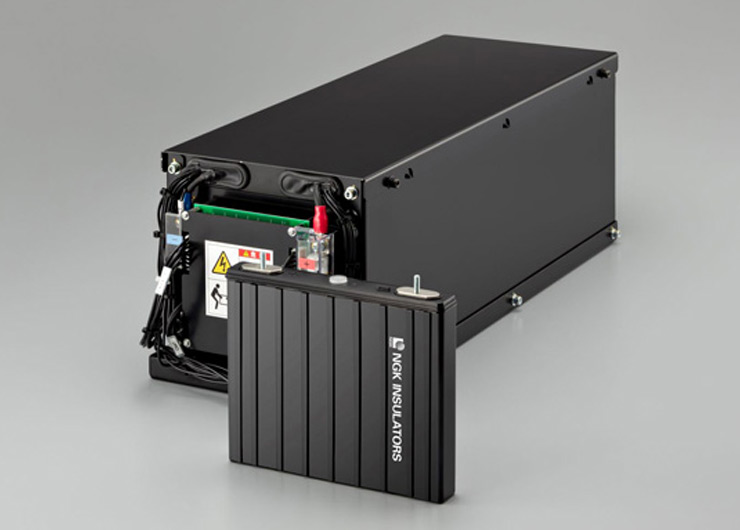Strengthening resilience required for power infrastructure
You never know when disaster will strike. In recent years there has been an increase in the number of strong typhoons, hurricanes and localized torrential rains, which have caused serious disruptions in many parts of the world. And the risk of a major earthquake or a serious accident is ever-present. To get social and economic activities up and running as soon as possible after natural disasters and accidents, our energy, communications and other infrastructure has to be increasingly resilient. Efforts to achieve this are underway around the world, and systems that combine distributed power sources such as solar power with storage batteries are attracting attention as a way to improve the resilience of electric power infrastructure.
Zinc rechargeable battery combines advantages of lithium-ion and nickel-metal hydride rechargeable batteries
Storage batteries are designed to be repeatedly recharged and discharged, and a variety of types are currently in use. Two types that are used in electric vehicles, hybrid cars, mobile devices, etc., are candidates for small- to medium-scale storage batteries for distributed power sources.
One is the lithium-ion battery, which is characterized by its ability to store a large amount of electricity in a small volume (that is, high energy density), but because it uses a flammable organic electrolyte, strict measures must be taken to prevent fire. The other type is the nickel-metal hydride battery, which uses an aqueous electrolyte and is safer, but does not have very high energy density.
NGK is developing a rechargeable battery that meets both safety and energy density requirements — the zinc rechargeable battery.
Achieving high power resilience while contributing to carbon neutrality
The battery has a structure in which the negative electrode of a nickel-hydroxide battery is replaced with zinc. It is safer and has a higher energy density than nickel-hydroxide batteries, but it has a shorter life span. NGK solved this problem by using its proprietary ceramic technology to fabricate the separator that separates the positive and negative electrodes. The practical application of zinc rechargeable batteries is now closer than ever.
Ceramic separators enabling long-life zinc batteries
![[General separator]Zinc dendrite penetrates the separator [OH-ion conductive ceramic separator]highly densified separator prevents the penetration of zinc dendrites](img/kw12_item_img2.gif)
The commercialization of safe and energy-dense zinc rechargeable batteries will lead to their installation in office buildings and schools. If the electricity stored in these batteries can be generated from renewable energy sources, it will realize a long-held dream — an ideal system that both contributes to carbon neutrality and enhances power network resilience.
Zinc rechargeable battery

Writer
Aoyama Seiko
Science and Technology Journalist
Aoyama Seiko studied chemistry at Ochanomizu University and its graduate school. She has worked in public relations for a research funding agency and as a journalist and editor for a chemistry magazine. She now works for Sci-Tech Communications, producing public relations materials (newsletters, website text, etc.) for research institutions and technology companies. She also teaches science writing at several universities.


